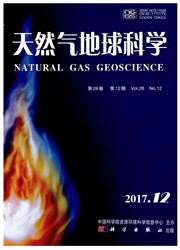

 中文摘要:
中文摘要:
辽东湾地区辽东和辽西2个潜山构造带形成演化过程和成藏条件有较大差异。根据最新的地震、钻井及岩心薄片等资料,结合区域构造演化背景和勘探实践,对2个潜山构造带基岩的岩性、结构特征、构造演化过程以及成藏条件进行研究。结果表明:潜山基岩在平面出露和垂向结构上有非均质性,这与两者的差异演化过程有关:辽西潜山经历了自中生代以来的多次反转抬升和新生代初期的伸展裂陷作用,形成时间较早;辽东潜山是在始新世的伸展裂陷以及渐新世末期区域性的挤压反转和郯庐断裂带的走滑压扭作用下形成的。两者不同的演化过程导致辽东潜山的油气来源、储层条件、盖层条件均差于辽西潜山,且晚期走滑断裂的复活可能对辽东潜山油气藏进行破坏调整,因此其聚集油气的能力要远差于辽西潜山。
 英文摘要:
英文摘要:
The evolutionary process and reservoir formation conditions of Liaodong and Liaoxi buried hills structural belts in Liaodong Bay area are different.According to the latest geological and seismic data,combined with regional tectonic evolution background and exploration practice,the heterogeneity of lithology and structure of buried hills,and their evolutionary process and hydrocarbon accumulation conditions were investigated.The results show that,the bedrocks are various in outcrop range on the plane and the vertical structure.These are fundamentally controlled by their evolutionary processes.The Liaoxi buried hill has undergone multi-phase inversion since Mesozoic and Early Cenozoic extensional rifting;Liaodong buried hill has undergone the Eocene extensional rift,and regional compressional inversion and torsion of Tan-Lu fault zone in Late Oligocene.The different evolutionary processes of two buried hills leading to the hydrocarbon source,reservoir condition and cap condition of Liaodong buried hill are worse than Liaoxi buried hill,and late strike-slip faults may destroy and adjust the previous oil and gas reservoir of Liaodong buried hill,making its ability to gather oil and gas far less than Liaoxi buried hill.
 同期刊论文项目
同期刊论文项目
 同项目期刊论文
同项目期刊论文
 Influence of lithosphere-asthenosphere interaction on the overriding lithosphere in a subduction zon
Influence of lithosphere-asthenosphere interaction on the overriding lithosphere in a subduction zon Numerical modeling of convective erosion and peridotite-melt interaction in big mantle wedge: Implic
Numerical modeling of convective erosion and peridotite-melt interaction in big mantle wedge: Implic Geothermal regime and source rock thermal evolution in the Chagan sag, Inner Mongolia, northern Chin
Geothermal regime and source rock thermal evolution in the Chagan sag, Inner Mongolia, northern Chin Meso-Cenozoic lithospherethinning in the eastern North China Craton: evidence from thermal history o
Meso-Cenozoic lithospherethinning in the eastern North China Craton: evidence from thermal history o 期刊信息
期刊信息
